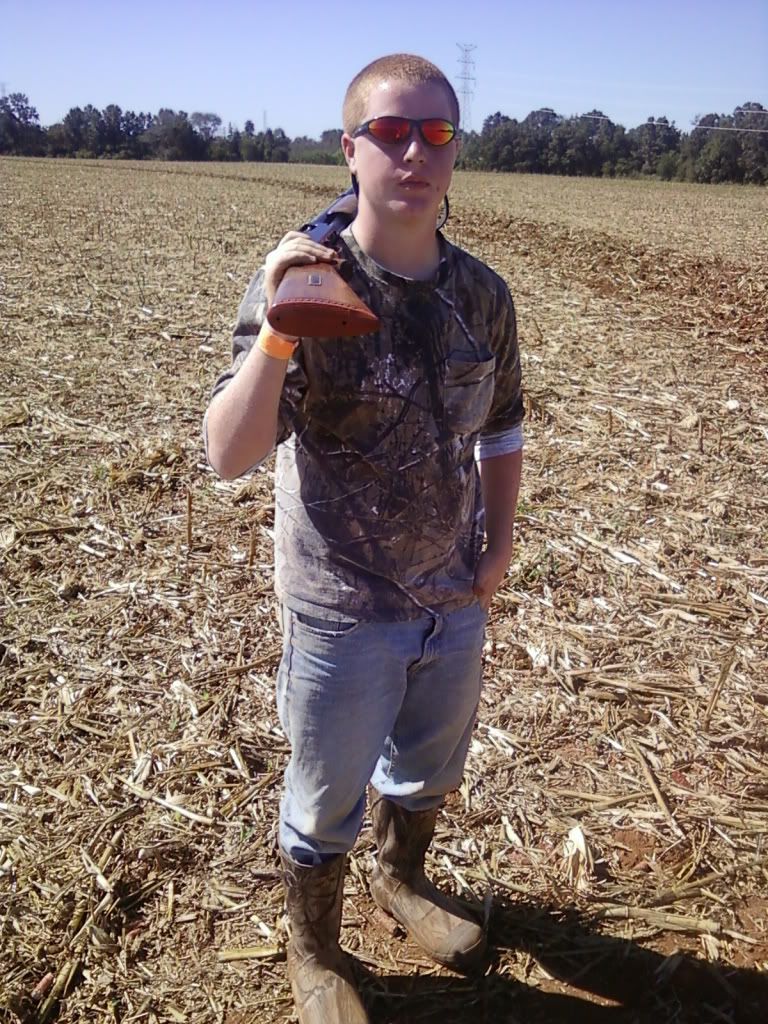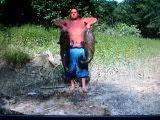Post by Greenedog on Sept 30, 2008 19:52:23 GMT -5
Greene County Humane Society addresses feral pigs in area
By Rene' Abram, Greene County Humane Society Shelter Manager
Within the last year the Greene County Humane Society has received a few calls related to feral pig sightings or unseen, but heard reports.
While the Humane Society is not responsible for this type of matter it is our responsibility to inform the public that areas in Indiana do have wild pig populations.
Domestic pigs were introduced from Europe to the Americas by Spanish explorers. Over time, some pigs escaped or were intentionally released into the wild. Subsequently, free-ranging, feral populations established themselves on American soil.
The home territory of a feral pig covers an area about 10 square miles or less. However, if food is in short supply, the pigs may range up to 50 square miles. Biologists estimate the nationwide population of feral pigs to be around four million animals.
Feral pigs look very similar to the domestic pig. They are medium-sized hoofed mammals with a long, pointed head and stocky build. Males and females look much alike. Wild hogs exhibit great variation in color and size. The average wild sow weighs about 110 pounds, and the average wild boar weighs 130 pounds. Their hair is coarse with long bristles (coarser, denser and longer than that of a domestic pig). Colors and patterns range from solid black, gray, brown, blonde, white, or red to spotted and belted combinations of these same colors. Most generally the animals are black. An adult develops a thick, scruffy mane with stiff bristles tipped with blonde.
Feral pigs have elongated, flexible, flattened snouts. Their pointed ears stand erect, about four to five inches above their head. Their moderately long tails are sparsely haired, straight and never coiled like the tail of a domestic pig. They have four cloven feet, similar in appearance to a deer's hooves. Boars have four continually growing tusks that can be extremely sharp. The upper canines curl up and out along the sides of the mouth. Unlike some other hoofed animals, the feral pig has a simple stomach and does not chew cud.
Feral pigs are opportunistic omnivores that eat whatever plants or animals happen their way. They especially relish acorns as well as hickory and beech nuts in the autumn. At other times of the year they eat forbs, grasses, leaves, berries and other fruits, roots and tubers, corn and other agricultural crops, insects, crayfish, frogs, salamanders, snakes, mice, eggs of ground-nesting birds, young rabbits, fawns and young livestock, such as lambs, calves, kids. They can also kill larger livestock that are weak from illness or injury.
Pigs feed most heavily at dawn and dusk, spending the majority of the day either wallowing in mud holes or resting in dense vegetation. They nest and rest in dense vegetation and secluded thickets. Their nests and beds are small, grass-lined hollows made of piles of grass and twigs. Feral hogs are fast becoming America 's most unwanted invasive species.
To report feral hog sightings or damages, call your local USDA or State Department of Conservation office.

By Rene' Abram, Greene County Humane Society Shelter Manager
Within the last year the Greene County Humane Society has received a few calls related to feral pig sightings or unseen, but heard reports.
While the Humane Society is not responsible for this type of matter it is our responsibility to inform the public that areas in Indiana do have wild pig populations.
Domestic pigs were introduced from Europe to the Americas by Spanish explorers. Over time, some pigs escaped or were intentionally released into the wild. Subsequently, free-ranging, feral populations established themselves on American soil.
The home territory of a feral pig covers an area about 10 square miles or less. However, if food is in short supply, the pigs may range up to 50 square miles. Biologists estimate the nationwide population of feral pigs to be around four million animals.
Feral pigs look very similar to the domestic pig. They are medium-sized hoofed mammals with a long, pointed head and stocky build. Males and females look much alike. Wild hogs exhibit great variation in color and size. The average wild sow weighs about 110 pounds, and the average wild boar weighs 130 pounds. Their hair is coarse with long bristles (coarser, denser and longer than that of a domestic pig). Colors and patterns range from solid black, gray, brown, blonde, white, or red to spotted and belted combinations of these same colors. Most generally the animals are black. An adult develops a thick, scruffy mane with stiff bristles tipped with blonde.
Feral pigs have elongated, flexible, flattened snouts. Their pointed ears stand erect, about four to five inches above their head. Their moderately long tails are sparsely haired, straight and never coiled like the tail of a domestic pig. They have four cloven feet, similar in appearance to a deer's hooves. Boars have four continually growing tusks that can be extremely sharp. The upper canines curl up and out along the sides of the mouth. Unlike some other hoofed animals, the feral pig has a simple stomach and does not chew cud.
Feral pigs are opportunistic omnivores that eat whatever plants or animals happen their way. They especially relish acorns as well as hickory and beech nuts in the autumn. At other times of the year they eat forbs, grasses, leaves, berries and other fruits, roots and tubers, corn and other agricultural crops, insects, crayfish, frogs, salamanders, snakes, mice, eggs of ground-nesting birds, young rabbits, fawns and young livestock, such as lambs, calves, kids. They can also kill larger livestock that are weak from illness or injury.
Pigs feed most heavily at dawn and dusk, spending the majority of the day either wallowing in mud holes or resting in dense vegetation. They nest and rest in dense vegetation and secluded thickets. Their nests and beds are small, grass-lined hollows made of piles of grass and twigs. Feral hogs are fast becoming America 's most unwanted invasive species.
To report feral hog sightings or damages, call your local USDA or State Department of Conservation office.













 Just another night at work for me and Monty will be back here again bright and early.
Just another night at work for me and Monty will be back here again bright and early. 



